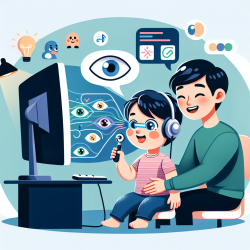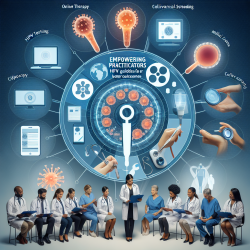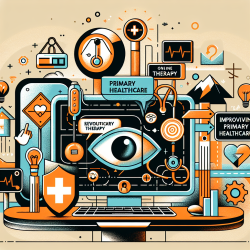As a passionate speech-language pathologist dedicated to creating outstanding outcomes for children, I’m thrilled to share the transformative potential of eye gaze technology for individuals with Rett Syndrome. Recent research conducted in the Netherlands has shed light on how this innovative form of Augmentative and Alternative Communication (AAC) is making a significant impact on the lives of affected families. Here’s a deep dive into the findings and what they mean for practitioners looking to enhance their skills or delve into further research.
The Power of Eye Gaze Technology
Rett Syndrome (RTT) is a rare neurodevelopmental disorder that predominantly affects females, leading to severe communication impairments. Eye gaze technology, which tracks the user’s eye movements to control a computer interface, has emerged as a promising tool to help these individuals communicate more effectively. The study titled "Eye Gaze Technology as a Form of Augmentative and Alternative Communication for Individuals with Rett Syndrome: Experiences of Families in The Netherlands" provides valuable insights into the experiences of 67 Dutch families.
Key Findings
Here are some of the crucial outcomes from the research:
- Trial and Adoption Rates: Out of 63 respondents, 20 had experience with eye gaze systems, and 28 expressed a desire to trial these systems in the future.
- Funding and Support: Following trial periods, 11 systems were funded through health insurance for long-term use, while two families decided the system was not appropriate.
- Progress in Communication: The majority of families reported noticeable progress in their child’s communication skills with longer-term use of the technology.
- Satisfaction Levels: Despite some frustrations with the technology, satisfaction with the systems was generally higher than satisfaction with the support received.
Implementing Research Outcomes in Practice
As practitioners, we can leverage these findings to enhance our service delivery and support for children with RTT:
- Comprehensive Trials: Ensure well-supported, long-term trials of eye gaze systems to accurately assess their suitability for each child.
- Holistic Training: Provide in-depth, hands-on training for families and all members of the child’s social network, including therapists, educators, and caregivers.
- Personalized Page-Sets: Deliver systems with pre-installed, personalized vocabularies to reduce the time commitment required from parents.
- Collaborative Networks: Foster collaborations between national parent associations and professional networks to disseminate knowledge and support effectively.
Encouraging Further Research
While the findings are promising, there is a clear need for further research to optimize the use of eye gaze technology for individuals with RTT:
- Oculomotor Assessments: Develop assessments to explore the impact of oculomotor functions and apraxia on the effective use of eye gaze systems.
- Motivational Factors: Investigate the motivational and affective factors that influence the successful adoption of this technology.
- Receptive Language Testing: Pilot projects to test the validity of receptive language assessments using eye gaze technology are essential.
To read the original research paper, please follow this link: Eye Gaze Technology as a Form of Augmentative and Alternative Communication for Individuals with Rett Syndrome: Experiences of Families in The Netherlands.










